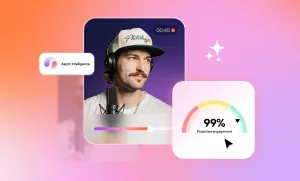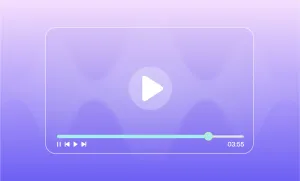Let’s be honest here: few things elicit childlike joy as much as a good prank.
From Whoopee cushions snuck onto seats to prank calls, humans have invented countless ways to trick each other. We even dedicate an entire day each year to the art of pranking.
Given this love for mischief, it’s no surprise that prank videos have long been one of the most popular genres on social media. When done right, these videos bring joy, laughter, and a sense of community to viewers.
But there’s a fine line between creating lighthearted entertainment and crossing ethical boundaries to win a quick laugh online.
And creators wanting to make a name for themselves in the prank space will do well to understand where this line is drawn — and why it's critical they don’t cross it.
The history of prank videos
Did you know that prank videos date back to the mid-20th century? Yes, the first hidden camera show, Candid Camera, aired in 1948, paving the way for future trailblazers like Jackass, Aston Kutcher’s celebrity prank show, Punk’d, and Impractical Jokers, which dominated the airways in the 2000s onwards.
The launch of YouTube started the democratization of the prank video, allowing everyday people to upload their at-home pranks pulled on unsuspecting parents, siblings, partners, and even their own children, to the platform.
As the genre grew, creators like Roman Atwood and PrankvsPrank rose in popularity, drawing millions of fans with their prank videos. These channels transformed pranking into a digital phenomenon, combining surprise and humor with the interactive, viral potential of social media.
But it wasn’t all sunshine and rainbows. Creators needed to up the stakes to keep pulling in the views. For some, that meant crossing the line into unethical territory…
“It's just a prank”: the wrong way to make prank videos
In 2016, YouTube was dominated by a prank culture. From killer clowns to fake cheating, there was no end to the methods creators used to trick their unsuspecting victims.
While many posted harmless videos pranking their friends and families, several creators found fame and fortune pushing the envelope further and further — leading to huge backlash when their pranks started going too far.
Let’s look at some examples of pranks that weren’t funny but harmful, resulting in long-term trauma for those implicated and a blanket ban on dangerous pranks by YouTube.
Secret Mizzy: sometimes ‘pranks’ are just crimes
In 2023, Bacari Ogarro, a TikToker known as Secret Mizzy, found himself in hot water (and on national news) after a series of pranks went too far.
The ‘pranks’ included damaging library books, entering a stranger’s home without permission, and stealing a woman’s dog. The teenager has since been sentenced to 18 weeks in prison for breaking a court order that prohibited him from filming people without their consent, with the judge telling him that his “pranks are not funny.”
Sam Pepper: faking a murder
Sam Pepper is an infamous figure online. In 2014, he was accused of sexual assault after ‘pranking’ unsuspecting women by asking them for directions and then pinching their behinds with a fake hand.
And if that wasn’t bad enough, Pepper went viral again in 2015 when he uploaded a video that showed him not only kidnapping another creator but tricking them into believing they’d watched their friend be murdered.
This insane stunt caused lasting psychological damage, but remember, “It’s just a prank, bro!”
Ethical, funny, and creative: the right way to make prank videos
The lesson here isn’t that prank videos are inherently bad. When done correctly, they can be a lot of fun for everyone involved.
Let’s look at a couple of examples of fun, ethical pranks.
“I hid 100 mini ducks…”
This popular TikTok prank sees people hiding 100 or so miniature ducks around their parents’ house.
This prank works because it’s harmless, temporary, and fun, even doubling as a treasure hunt as the prankee rounds up the ducks that have been tucked under couch cushions, balanced on lampshades, and hidden away in underwear drawers.
“I paid for premium air…”
Another easy and harmless prank is the premium air trick. So, how does it work?
These viral videos show the prankster telling someone, usually their dad, that they’ve paid an exorbitant fee at the garage to have their tires filled with ‘premium air.’ Cue: thousands of baffled dads wondering where they went wrong.
Prank content isn’t dead. But it’s changing.
Despite many creators receiving backlash in recent years, the genre is far from dead — but the standards by which prank videos are judged have changed.
A key decider of whether a prank video is good or bad is whether we’re laughing at the prankee or with them. In our view, the best prank videos are light-hearted, focusing on quick “Got you!” moments that have everyone laughing — not just the prankster.
Creators wanting to make viral-worthy prank videos that prioritize ethics should remember these rules:
– Choose your prankee wisely. Don’t take advantage of power dynamics and avoid roping in unsuspecting members of the public.
– Always ask for consent to post. It’s more fun when everyone involved is in on the joke
– Be empathetic. Take people’s feelings and safety into account and avoid harmful, humiliating, or insensitive pranks.
– Keep it temporary. Your pranks should only have short-term or reversible effects
Be creative… And funny! Because isn’t that the point of pranking?








